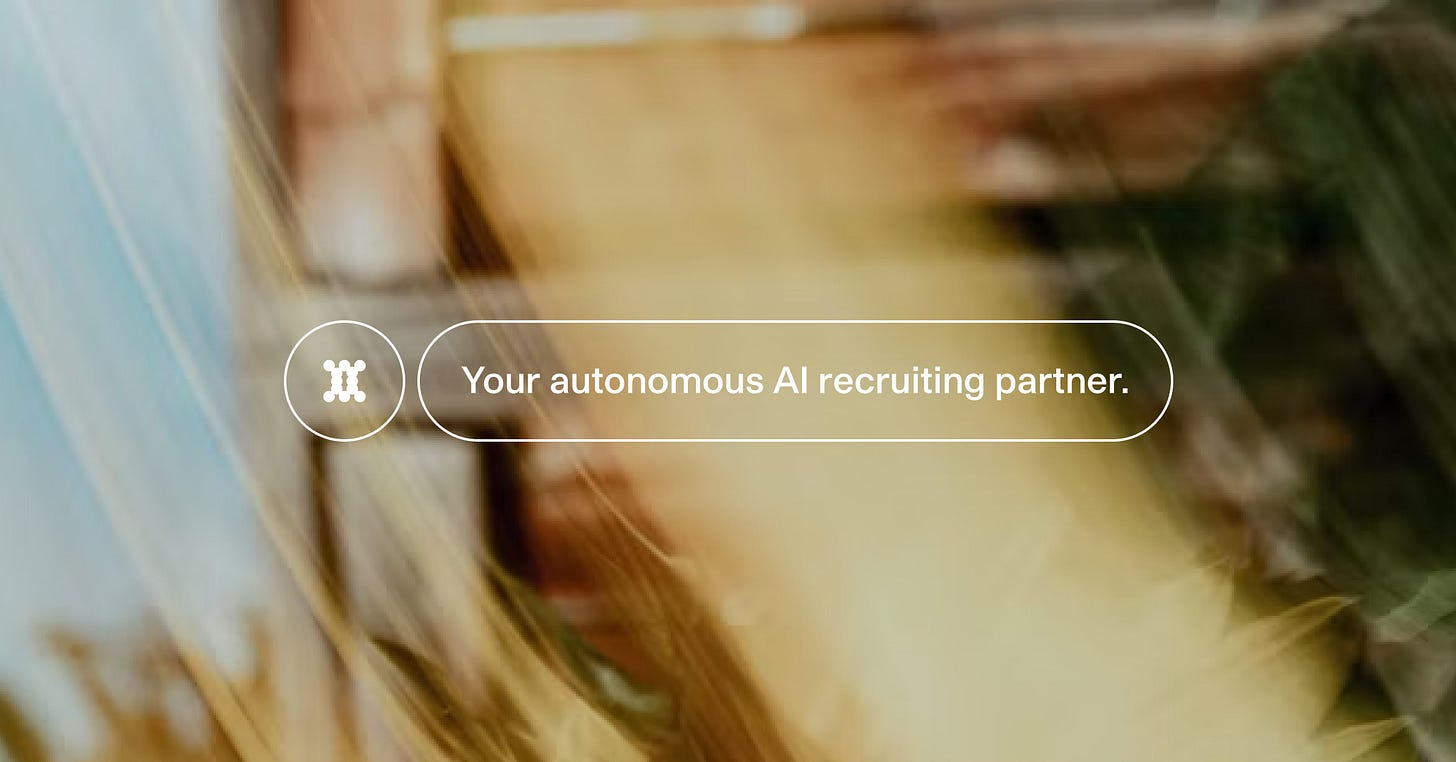The End of Pixel-Perfection: Agentic AI Design Is the New Frontier
What I learned from six months of designing an AI agent
After more than a decade of digital product design, it’s been refreshing and a totally new experience creating an AI agent (Max, Tezi’s autonomous AI recruiter). Many old design paradigms became irrelevant quickly, and new ways of working emerged. Here’s what I’m seeing five months into agentic AI design:
1. Content is the Canvas, Not UI
The user interface (UI) is the final deliverable in traditional product design. Designers craft every pixel. However, when designing AI agents, the content itself is the canvas. The focus shifts from how information is presented to the substance and relevance of the content delivered by the AI. My recent design deliverables could’ve just been plaintext docs. When crafting an active AI collaborator that interacts proactively with humans, the communication itself is the user interface.
2. Directional, Not Pixel-Perfect
Traditional product design often demands pixel-perfect precision, where every element is carefully placed and aligned. There’s one right way for a screen to be. In contrast, agentic AI design is more directional or gestural. “I’d like the agent to hit these three key beats in the conversation and transition out of it like this…” Like working with humans, you get better results by allowing it to improvise and avoiding prescriptive and limiting constraints.
3. Dogfooding is Designing
Dogfooding, or using your own product, is of new importance in agentic AI design. Since you truly don’t know what the AI will do, you have to “f*ck around & find out.” When using the product, you figure out what’s not working and keep designing with your engineering partners. If QA was normally the last 10%, consider it now the last 50%.
4. Expert Defaults
A user’s initial interactions with your agent will set the standard for how intelligent, capable, and useful they believe it to be. In our case, you shouldn’t have to teach a recruiter how to recruit. An expert recruiter comes with decades of experience and knows all the best practices. You can ask them to work a little differently to suit your company and your unique needs, but the defaults are pretty damn good. That’s an absolute must in this new era of AI agents. It’s ultimately why the vanilla, catch-all, thin wrapper agentic products aren’t getting traction. It’s too much work to make them useful.
5. AI Agents are Better and Worse than Humans
Part of agentic design is to leverage what the agent will absolutely be better at than humans while failing gracefully and transparently in the areas where humans are still better. For our product, a human just can’t tear through 3,000 resumes in seconds and tell you who the top 10 applicants are, but AI can. However, no one will join a company because the AI agent is so compelling; we need humans to establish that connection and rapport with candidates. A quality agentic product will know where it’s great and where it falls down.
6. Leverage Familiar (Human) Paradigms
Grounding the agent in familiar human paradigms helps bridge the gap between the old and the new. This approach reduces the learning curve and fosters greater acceptance, trust, and ease of use. In our case, that meant building for conversations in Slack. Any hiring manager is very familiar with Slacking their recruiting partner to make decisions about candidates, check in on the pipeline, and relay referrals. An ideal agentic product will leverage the patterns for human-to-human interactions to take a shortcut to successful human-to-AI interactions.


